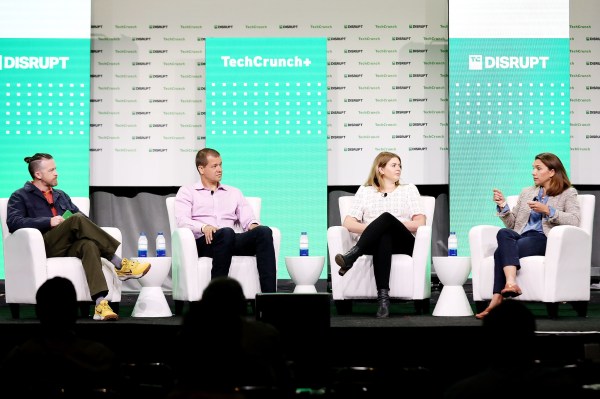A lot of problems worth solving aren’t ones that you can solve in a year or two or even 10.
For founders and investors alike, such long timelines can seem daunting. But for Gene Berdichevsky, co-founder and CEO of battery tech startup Sila, hard tech problems are also some of the most tantalizing.
“It’s always a good time to be a hard tech startup,” Berdichevsky said at TechCrunch Disrupt. “One of the reasons is that the world doesn’t change just because it should. It changes because someone goes after something insanely hard and actually succeeds at it.”
Such hard.tech startups run the gamut from advanced batteries like those made by Sila to nuclear fusion, quantum computing, automation and robotics. Any tech that has the potential for such broad impact also has a massive potential market, and that means a certain class of investors are willing to be in it for the long haul.
“Hire people to do the technical stuff. Keep an eye on it, but then go learn the other pieces.” Gene Berdichevsky, co-founder and CEO, Sila
“We look for real step-change, game-changing technologies that are going to benefit everyone and we think that will drive a huge [total addressable market],” said Milo Werner, a general partner at The Engine.
When Berdichevsky founded Sila, he believed his company’s technology, a silicon-based anode that promises to improve lithium-ion battery energy density by 20%–40%, would be a significant enough advance that it would have no problem finding a market.
What he didn’t expect was how long it would take. When Sila’s first product debuted inside the Whoop 4.0 wearable last year, the path to market had been twice as long as Berdichevsky had expected.
In many cases, investors would have balked at such a delay. But Berdichevsky had a few things working in his favor.
For one, he had found the right investors, albeit inadvertently. “We had to scrap for absolutely every dollar. I think we’d pitch 50 investors to maybe get one term sheet in the early days,” Berdichevsky said.
Part of the struggle, he said, was “because I was too much of an engineer — we would always tell the whole story in gory detail. There are only so many people that actually want to dig in and understand the details of battery chemistry.”
“We basically had to educate all of our investors on the market itself and only a few ended up participating.” That ended up working out well for Sila, though. “Turns out, those were sort of some of the best investors in the Valley.”
Once he had investors on board, one of Berdichevsky’s most important moves was keeping them in the loop about Sila’s progress and the challenges it faced.
Many founders go about things the wrong way, he said, by setting hard expectations and timelines and telling investors “don’t worry about the details.”
Instead, Berdichevsky feels founders should be frank about the challenges they face, inform investors when they hit milestones, provide updates when they run into new roadblocks and share plans on how they intend to surmount them. With that strategy, he said, “you actually build trust over time.”
While Sila was working to crack the problem, the market for batteries skyrocketed, led by continued growth — first in mobile devices and then in electric vehicles. Riding such positive trends can help placate investors. Aiming for a swiftly growing market “more than offsets the fact that it takes longer,” Berdichevsky said.
Erin Price-Wright, a partner at Index Ventures, agreed that promising markets help make investors feel more comfortable with their long-term bets. “If the TAM is increasing, we’re much more likely to be comfortable with those long-term time horizons.”
No company will get there without the right team, of course. “In a lot of ways, your company is shaped by the first 20 or 30 people you hire,” Berdichevsky said. “The things we were selecting for were exceptional talent, but also folks that want to go the distance.”
Price-Wright said that she looks for founders who are “talent magnets, people who are extremely self-aware and able to see talent in others, and then really bring them in for the vision and the journey of the company.”
Many founders in hard tech who have spent their lives focused on their work may not feel prepared to make the switch from deep thinker to pied piper. Some investors are willing to help founders develop those skills, though.
Werner said that the work she and her team do at The Engine focuses less on hard technical challenges and more on soft skills. “We end up working a lot more on the soft spaces, like thinking about working and coaching on team building, thinking about communication style and how people interpret you.”
For founders used to being close to work they enjoy and excel at, the switch from research to running a company can be challenging, Berdichevsky acknowledged. His advice: “Hire people to do the technical stuff. Keep an eye on it, but then go learn the other pieces.”
